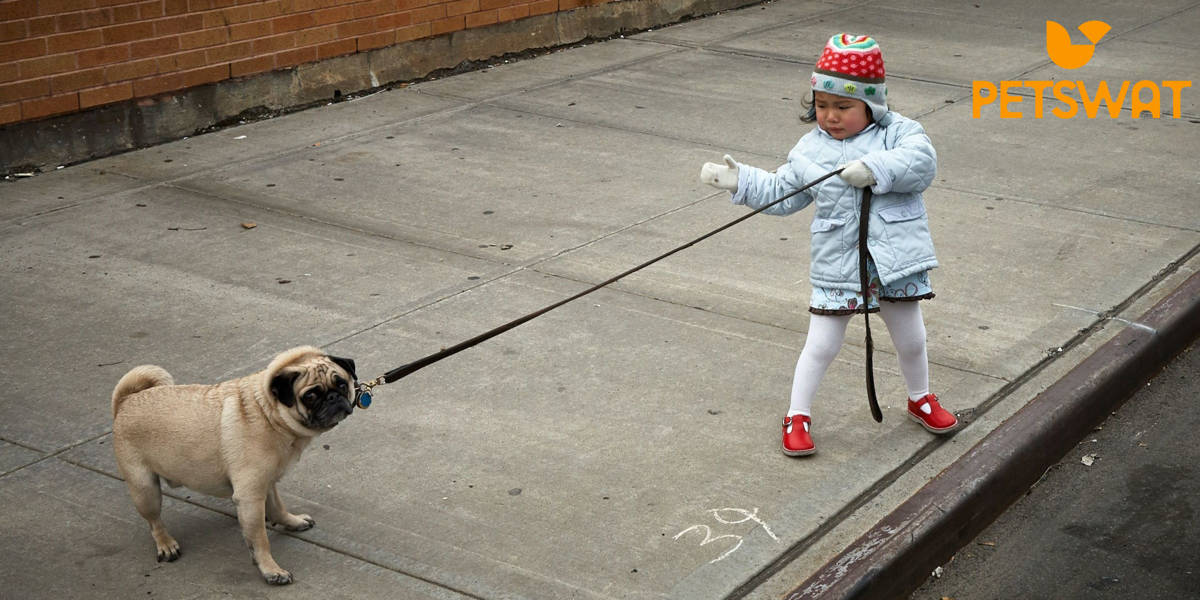There’s nothing quite as rewarding as having a dog that listens attentively to your commands. Whether you want your furry friend to sit, stay, or come when called, effective communication is the key to a harmonious relationship. So how to train your dog to listen to you?
Training your dog to listen not only ensures their safety but also enhances the bond between you and your canine companion. In this comprehensive guide, we’ll delve into the art of training your dog to listen, offering valuable insights and practical techniques to help you achieve a well-behaved and responsive pet. Get ready to embark on a journey of mutual understanding and trust! 🐾🐕
TL;DR: Training your dog to listen is a rewarding endeavor that strengthens the bond between you and your pet. This guide offers insights and techniques to help you effectively communicate and achieve obedience.
Imagine a world where your dog responds promptly to your cues, eagerly following your lead. While achieving this level of obedience requires effort, patience, and consistency, the benefits are immeasurable.
Training your dog to listen involves more than just teaching commands – it’s about building a strong foundation of communication that fosters trust and respect between you and your furry friend.
The Importance of Training Your Dog to Listen

- Safety and Control:
- Emergency Situations: A dog that listens can be recalled quickly, preventing potential dangers.
- Leash Manners: Obedience helps prevent your dog from darting into traffic or approaching unfamiliar dogs without permission.
- Enhancing Bond and Communication:
- Trust Building: Effective communication creates a foundation of trust and mutual understanding.
- Strengthening the Relationship: A responsive dog fosters a deeper bond between pet and owner.
Key Principles of Training Your Dog to Listen
- Consistency:
- Uniform Commands: Use consistent cues for each command to avoid confusion.
- Routine Training: Regular practice reinforces learning and creates a predictable routine for your dog.
- Positive Reinforcement:
- Reward-Based Training: Reward desired behavior with treats, praise, or play to encourage repetition.
- Correction-Free Approach: Focus on rewarding good behavior rather than punishing mistakes.
- Patience and Persistence:
- Gradual Progression: Start with basic commands and gradually introduce more complex ones.
- Repetition: Be patient and prepared to repeat commands until they become second nature to your dog.
Teaching Commands That Foster Listening
- Sit and Stay:
- Step-by-Step Approach: Begin by teaching “sit,” then progress to “stay.”
- Release Command: Teach a release word to signify when the dog can move again.
- Recall (Come):
- Positive Association: Make coming to you a joyful experience by using treats and praise.
- Distraction Training: Practice the recall command in various environments and gradually increase distractions.
- Focus (Look at Me):
- Eye Contact: Train your dog to make eye contact on command, promoting attentive behavior.
- Foundation for Other Commands: “Focus” sets the stage for more advanced training.
Addressing Challenges and Maintaining Progress
- Distraction Management:
- Gradual Exposure: Introduce distractions gradually and reward focused behavior.
- Use of Leash: Begin with a leash to maintain control during challenging situations.
- Consistency in All Environments:
- Generalization: Practice commands in different settings to ensure your dog’s obedience is not limited to specific scenarios.
- Continued Training:
- Lifelong Learning: Ongoing training sessions keep commands fresh in your dog’s mind.
- Variety and Fun: Incorporate games and fun activities into training to keep your dog engaged.
Conclusion on How to Train Your Dog to Listen to You?
Tips From Experienced: Training your dog to listen is a journey that requires dedication, but the results are well worth the effort. By applying consistent techniques, positive reinforcement, and patience, you’ll cultivate a strong bond built on effective communication.
FAQs
Q1: Can I start training my dog to listen at any age?
A: Yes, you can train dogs of all ages, but starting early sets a solid foundation. Older dogs can also learn new commands with patience and consistent training.
Q2: What if my dog doesn’t respond to treats during training?
A: If treats aren’t motivating, try using toys, praise, or affection as rewards. Find what works best for your dog’s preferences.
Q3: How long does it take to train a dog to listen reliably?
A: The timeline varies based on the dog’s age, breed, and prior training. Consistency and regular practice play a significant role in achieving reliable obedience.
Q4: Can I train my dog to listen without using treats or rewards?
A: While treats and rewards are effective motivators, positive reinforcement can also include verbal praise, petting, and playtime.
Summary
Training your dog to listen is a rewarding endeavor that leads to a harmonious and joyful relationship. Through consistent training, positive reinforcement, and patience, you’ll nurture a bond built on effective communication and mutual respect.
Fun Fact: Dogs have an extraordinary sense of hearing, making them attentive to even subtle sounds. Training them to listen to your cues harnesses their natural instincts and strengthens your connection.
Originally posted 2023-06-30 15:40:02.
Johny is a dedicated pet enthusiast, author, and the driving force behind the insightful content at PetSWAT. With a deep passion for animals and a wealth of knowledge acquired through years of experience, Johny brings a unique perspective to the world of pet care and companionship.


